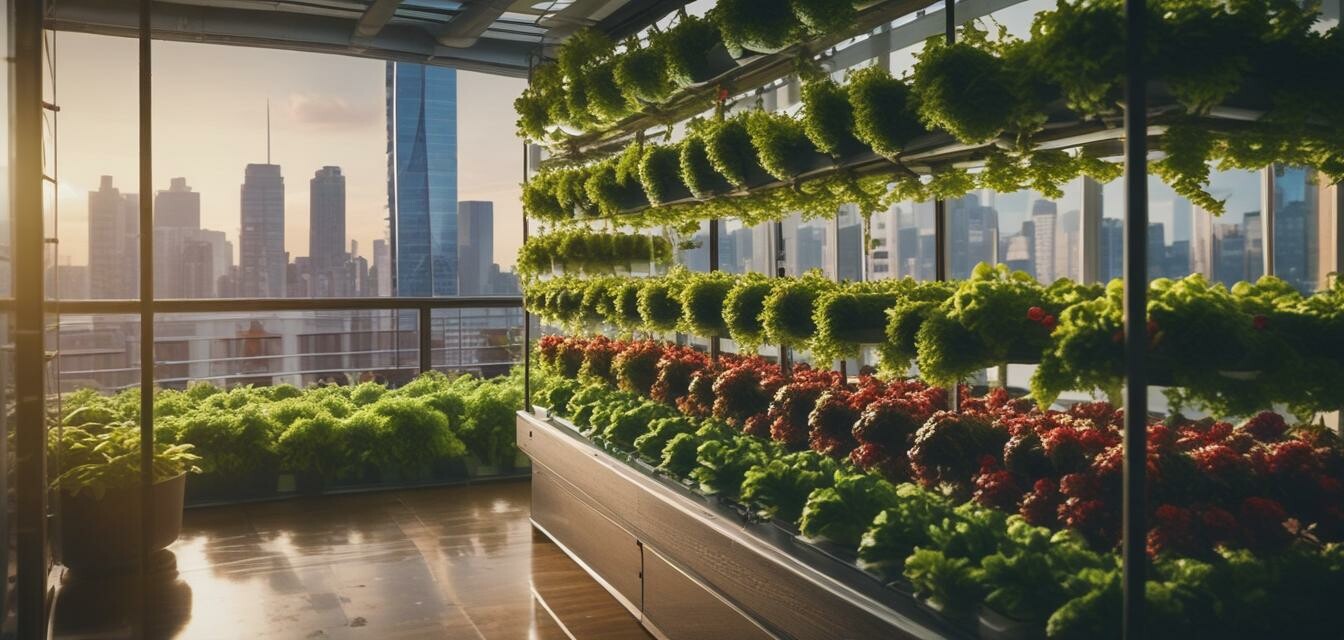
Hydroponics for sustainable urban farming
- Hydroponics provides efficient food production in urban settings.
- Innovative systems increase accessibility to fresh food.
- Community-driven hydroponic projects promote sustainability.
- Hydroponics reduces reliance on traditional farming methods.
- Incorporating technology enhances growing techniques.
As cities expand and populations grow, the challenge of providing sustainable food sources has become a pressing issue. Hydroponics, the practice of growing plants without soil, is emerging as a solution for urban farming. This innovative method allows for the cultivation of fresh produce in limited spaces, making it ideal for urban environments. In this article, we will explore how hydroponic methods are leading the charge for sustainable farming practices in urban settings, discussing innovations and community efforts that enhance food accessibility.
The rise of hydroponics in urban areas
Hydroponics has gained significant momentum in urban farming for several reasons:
- Space-saving designs allow for vertical farming.
- Reduction in water usage compared to traditional farming.
- Ability to grow fresh produce year-round, regardless of climate.
Innovations driving urban hydroponics
The landscape of hydroponic gardening is rapidly evolving with new technologies and practices. Some notable innovations include:
| Innovation | Description |
|---|---|
| Automated systems | Robotic solutions monitor and manage water and nutrient delivery. |
| Vertical gardening systems | Multi-layered setups maximize growing area in restricted spaces. |
| LED grow lights | Energy-efficient lighting supports plant growth indoors. |
| Sustainable materials | Using recycled or eco-friendly containers and growing media. |
Community efforts enhancing food accessibility
Communities across urban areas are embracing hydroponics not only for individual benefits but also to collectively improve food access. Initiatives include:
- Community gardens utilizing hydroponic techniques to empower locals.
- Workshops and training programs to educate the public about hydroponics.
- Partnerships between local governments and organizations to support urban farming.
- Schools incorporating hydroponic systems into their curricula to teach sustainability.
Case studies of successful urban hydroponic projects
Several examples highlight the positive impact of hydroponics in urban communities:
| Project Name | Location | Impact |
|---|---|---|
| Green City Growers | Cleveland, OH | Provides fresh produce to local markets while creating jobs. |
| Brooklyn Grange | Brooklyn, NY | Operates rooftop farms that supply restaurants and CSA programs. |
| Urban Greens | Providence, RI | Transforms underutilized spaces into productive hydroponic farms. |
The future of hydroponics in urban farming
The future of hydroponic gardening in urban environments is bright, with continued innovations and an increasing focus on sustainability. Emerging trends include:
- Integration of IoT (Internet of Things) technology for real-time monitoring.
- Advancements in nutrient solutions for optimized growth.
- Growth in urban farming cooperatives to support small businesses.
- Rising interest in educational programs related to sustainable practices.
Challenges to consider
While hydrophonics holds much promise, there are challenges to be aware of:
Pros
- Reduces land usage and water consumption.
- Year-round food production capabilities.
- Potential for higher yields compared to traditional farming.
- Encourages local food production, reducing carbon footprint.
Cons
- Initial setup costs can be high.
- Requires knowledge of hydroponic systems and plant care.
- Technical failures can disrupt food production.
- Regulatory challenges may exist in some urban areas.
Conclusion
Hydroponics presents a viable and innovative solution to the challenges of urban food production. Its efficiency, combined with the commitment of communities and advancements in technology, makes it a cornerstone of sustainable urban farming. As we continue to embrace these methods, the potential to create accessible, local food systems will grow, benefiting both the environment and urban populations. For further insights, explore our buying guides for helpful tips on getting started with hydroponic systems or read about the latest trends in hydroponics in our news and trends section.

